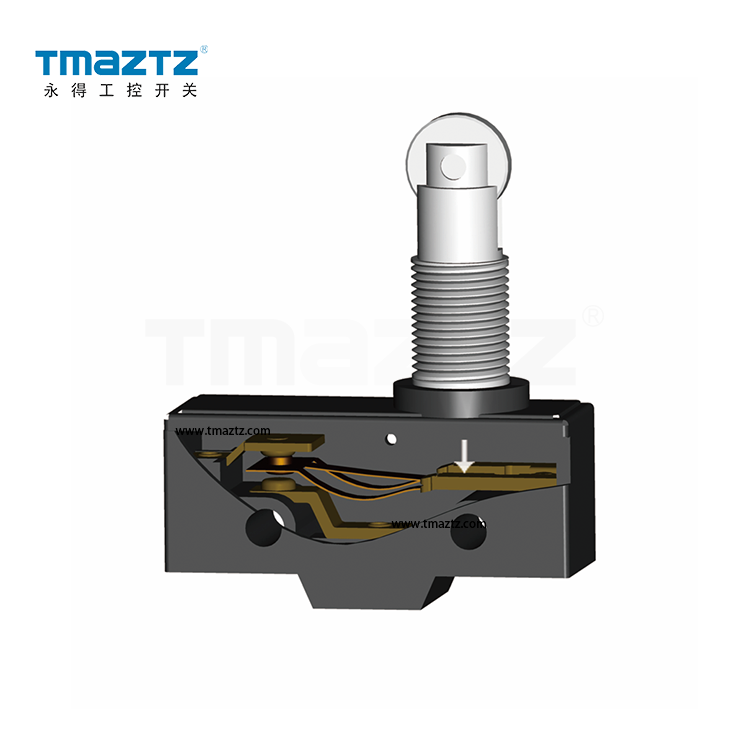What is the purpose of a micro switch?
In the realm of modern technology, where electronic devices are ubiquitous, even the tiniest components play significant roles. One such unassuming yet indispensable component is the micro switch. Also known as a miniature snap-action switch or micro contact switch, this tiny device has a profound impact on various industries and everyday life. In this article, we will explore the purpose of a micro switch, its applications, and its significance in the world of electronics and automation.
Understanding the Micro Switch
Before diving into its purpose, let's take a moment to understand what a micro switch is and how it works. A micro switch is an electromechanical switch that is designed to be compact and sensitive to physical changes in its environment. It consists of a housing, an actuator (a small lever or button), and a set of electrical contacts.
The key feature of a micro switch is its snap-action mechanism. When a certain force is applied to the actuator, it rapidly moves between two positions, causing a quick and decisive change in the state of its electrical contacts. This mechanism allows micro switches to open or close circuits with precision, making them ideal for applications that require accuracy and reliability.
The Purpose of a Micro Switch
Now that we have a basic understanding of what a micro switch is, let's delve into its primary purpose:
1. Limiting or Controlling Movement
Micro switches are often used to limit or control the movement of mechanical components in various devices and machines. The precise and rapid switching action of these switches makes them ideal for detecting specific positions or conditions and initiating actions based on those detections.
2. Safety and Interlock Systems
Safety is a paramount concern in many industries, and micro switches play a crucial role in ensuring it. They are commonly used in safety interlock systems to prevent accidents or mishaps. For example, in an industrial machine, a micro switch can be strategically placed to detect when a protective cover is open. If the cover is open, the micro switch will activate, immediately stopping the machine to prevent any potential harm to operators.
3. Appliance and Electronics Control
Micro switches are frequently used in appliances and electronic devices to control various functions. In a microwave oven, for instance, a micro switch is integrated into the door latch mechanism. When you open the door, the switch activates, cutting off power to the microwave's magnetron, ensuring your safety.
4. Detection of End Stops
Micro switches are commonly employed to detect the end positions of moving parts in machines and devices. In an elevator, for instance, micro switches are often used to determine when the elevator car has reached the top or bottom floor, signaling the control system to stop the motor.
5. Tactile Feedback in Input Devices
Micro switches are also the key components in tactile feedback input devices, such as computer keyboards and computer mice. The distinct "click" or "snap" sound and feel when you press a key or click a mouse button are often produced by the micro switch inside. This feedback enhances the user experience by providing confirmation of input.
6. Pressure and Weight Sensing
Micro switches can be integrated into pressure and weight sensing applications. For instance, in a bathroom scale, a micro switch is used to detect when pressure is applied to the scale's surface. This information is then translated into a weight measurement.
7. Automotive Applications
The automotive industry relies heavily on micro switches for various purposes. These switches can be found in car door locks, power windows, brake pedals, and even in the deployment mechanism of airbags. They play critical roles in ensuring the safe and efficient operation of vehicles.
8. HVAC Systems
In heating, ventilation, and air conditioning (HVAC) systems, micro switches are used to control the movement of dampers and valves. They help regulate the flow of air and maintain desired temperatures, contributing to energy efficiency and comfort.
9. Vending Machines and Dispensers
In vending machines and dispensers, micro switches are used to detect the presence of products or to ensure that a product has been properly dispensed before finalizing a transaction. This helps prevent issues such as product jams or incomplete transactions.
10. Industrial Automation and Robotics
Micro switches are integral components in industrial automation and robotics. They are used in robotic arms and machinery to precisely control movements and trigger actions based on sensor inputs. This level of precision is essential for tasks that require accuracy, such as manufacturing and assembly processes.
Conclusion
In the world of electronics and automation, it's often the smallest components that have the most significant impact. The humble micro switch, with its ability to provide precision control and reliable feedback, serves a diverse range of applications, from enhancing the safety of industrial machinery to improving the user experience in everyday electronic devices. Its small size belies its importance, making it a true workhorse in the world of electromechanical engineering. Whether you're pressing a button on your keyboard or relying on the safety interlock in an industrial machine, chances are a micro switch is quietly and reliably performing its essential task.




